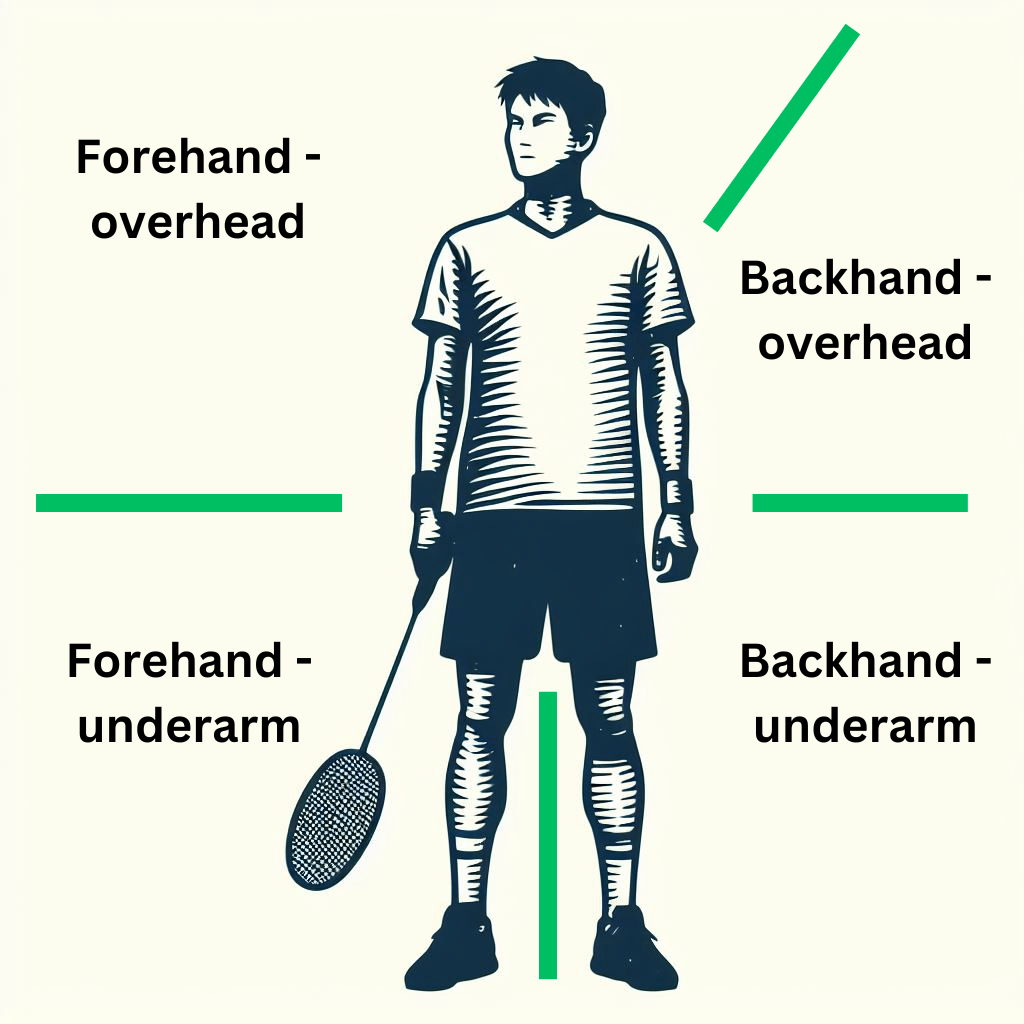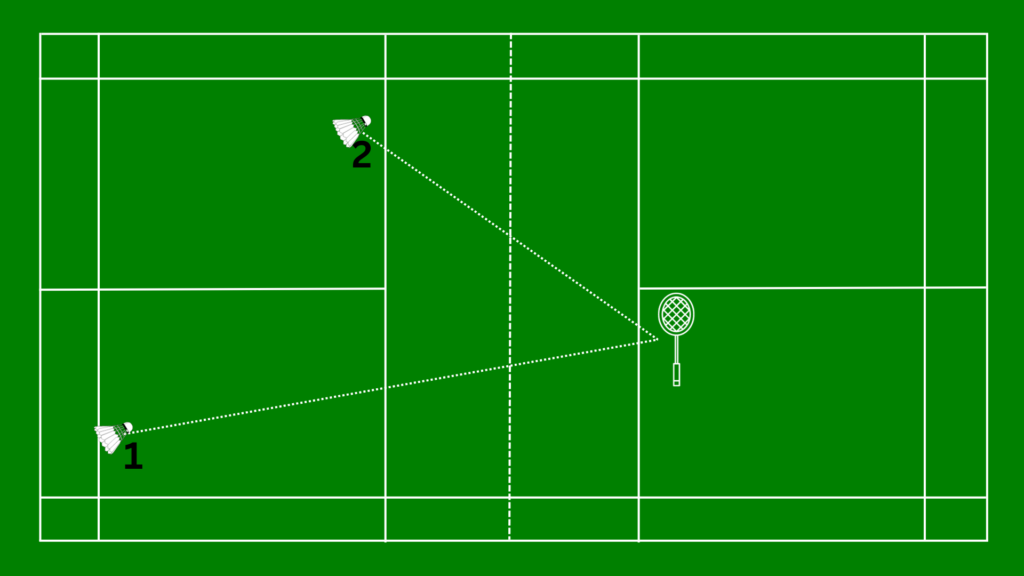I found myself drenched in sweat after just fifteen minutes of training badminton strokes.
It was a scorching hot summer day with high humidity, making it challenging to recover between exercises… But we were determined to make this session count in order to improve our game.
Little did we know, it turned out that we ended up following a training approach commonly used by the pros in Denmark. There, they often opt for short bursts of high-intensity work instead of training the same thing for hours.
Surprisingly, this method proved to be a blessing in disguise.
We discovered that when you know a break is near, you tend to give that extra bit of effort. During my time feeding the shuttle to the other player, I found that it motivated me to add extra pressure toward the end of a drill in order for us both to finish strong since I knew we wouldn’t be able to work for hours that day.
Despite its benefits, there was a downside: recovering felt like being in a sauna, with the stifling heat making it difficult to catch our breaths.
With no air conditioning, we were joking that it was cooler outside but it was true. If you were lucky, you’d catch a short breeze and have a pleasant moment.
In this article, you and I will look at an overview of the badminton strokes before diving into ideas to intensify your games and extend your rallies by strategically selecting specific strokes during your doubles games. It’s important to note that these tips are tailored for beginner and intermediate doubles players.
Let’s dive in!
Overview of the strokes in badminton
We often use words like ‘stroke’ and ‘shots’ interchangeably, but there’s a difference. Badminton shots are what most of us mean to refer to while strokes are the arm movement leading up to the shot.
Strokes can be confusing because there are numerous subtle variations within each category, making it challenging to keep track of all the small differences. We can simplify it by categorizing them into four main groups, as illustrated in this graphic below:

To break this down into a clear overview between the strokes and shots, I’ve created this table for you.
| Badminton stroke categories and their shots | |
|---|---|
| Forehand - overhead | Smash |
| Drop | |
| Clear | |
| Drive | |
| Push | |
| Forehand - underarm | Late clear |
| Net shot | |
| Drive | |
| Serve | |
| Lift | |
| Backhand - overhead | Smash |
| Drop | |
| Clear | |
| Drive | |
| Push | |
| Backhand - underarm | Late clear |
| Net shot | |
| Drive | |
| Serve | |
| Lift | |
Most of us are familiar with the forehand and backhand overhead shots like smashing or clearing. You’ve probably played an underarm shot without even thinking about it, but in training clips they often aren’t prioritized as they don’t allow us to hit the shuttle downwards in order to attack.
In badminton, underarm strokes are typically used as a last resort when we can’t get under the shuttle in time, rather than being our first choice. Similarly, generating enough power for backhand shots to reach the backline can be challenging.
If we fail to do so, we’ll end up hitting poor shots to the midcourt that can easily be punished by our opponents. Alternatively, we might be forced to play only flat drop shots and that can make our game predictable.
Ideally, we should strive to play forehand overhead shots whenever possible, supplemented by occasional backhand shots like during a low serve or a flat drive duel. The remaining strokes are useful for getting ourselves out of trouble.
With this overview out of the way, it’s time to dive into what this is all about…
Use these (overlooked) strokes to increase the length and intensity of your rallies
For many of us, the intensity of rallies is more important than simply winning. We thrive on being evenly matched and challenged to bring out our best performance.
Let’s face it, badminton isn’t enjoyable when all we do is serve into the net or play just a few shots before a fault occurs. While our games may lack technical stroke skills, it often boils down to our decision-making regarding which shot to play and when.
It all starts with a shift in mindset, transitioning from focusing only on executing the perfect stroke to making our opponents work hard for every point they earn.
When it comes to tactical decisions during a rally, this means altering our approach from attempting one-shot point winners to thinking ahead by 2-3 shots and strategically setting up our points in order to keep our opponents off balance.
While using classic strokes like jump smashing to win rallies may be enticing, mastering those strokes to a decent level requires extensive practice to get the technique and timing just right. In my experience, it takes longer to develop proficiency in these strokes compared to other equally useful skills.
Subtle shots like flat drives or push shots are frequently used in doubles games and are more challenging for opponents to counter effectively.
Changing your approach offers several benefits:
- Your game becomes less predictable
- Safer shots reduce the chances of committing a fault due to the need for absolute precision
- By making your opponents move more, you tire them out for future rallies
But the real gem is in the psychology of using a variety of strokes. It builds a powerful habit of keeping your opponent guessing while inducing creativity in you to come up with new ideas on the fly.
In the initial stages, you may not notice a significant difference when implementing this strategy. But soon enough, it becomes a crucial part of your arsenal to defeat opponents who just keep going.
To put this into practice on the court, it means incorporating more of these underestimated strokes that form the foundation of a doubles game. Meanwhile, playing less of the glorious shots like the smash and instead carefully selecting when to use them.
Here’s a list of the strokes I’ve noticed often being overlooked:
- Lifts
- Drives
- Push shots
- Serve
- Return of serve
- Net game
A simple but effective way to apply these could be by using a clear shot to create space for a cross-court drive.

Improving badminton strokes with training
In badminton, strokes are the most inconvenient thing to train. You’ll need a partner or coach to help train the shot timing as that’ll make the biggest difference to the quality of your strokes.
If you’re looking to increase the length of your rallies, consider practicing the overlooked strokes above and notice how many more points you’ll gain as your opponents eventually make mistakes.
Among them, lifts and drive shots tend to be particularly convenient strokes to practice because they don’t require much effort and are easy to incorporate while warming up in order to get extra reps in.
If you wanna practice strokes on your own
In fact, if I were to learn all the strokes again from scratch, I would prioritize practicing defensive strokes first in order to prolong my games. This approach not only increases the number of repetitions on the court over time but also provides opportunities to practice offensive shots.
Lifts and net shots may seem unexciting, but they are effective starting points. Once you become proficient in these strokes, it becomes relatively easier to master smash blocks, defensive drives, and push shots as you’ll make attacking more difficult for your opponents.
By incorporating these strokes, along with the clear shot, you will be able to hold your ground against opponents of similar skill levels.
You’ll challenge them until they become fatigued or make mistakes by hitting the net. This forces you to practice game reading, anticipate your opponent’s moves, and find open spaces to exploit in order to cause them to fumble.
When you later introduce more advanced strokes to your game, you will have already put in the hard work. These strokes will become valuable additions to your repertoire without relying on them excessively.
But even practicing these defensive strokes is challenging on your own.
You could use a feeding machine, especially if you just want to familiarize yourself with how to perform each of the strokes, but there’s a huge difference between performing a quality stroke when you’re ready and waiting for the shuttle compared to being under pressure.
Feeding machines tend to have more difficulty offering that pressure, but allow you to practice on your own so there’s definitely a case for using them if you can afford one.
If you choose this route, you may find it difficult to determine the best way to execute each stroke without real-time corrections. While performing drills on your own, I’ve discovered a few tips that may help improve your stroke technique beyond mere repetition.
Here’s what I’ve found:
- Wait slightly longer before hitting the shuttle than you think at first
- Hit the shuttle while your body is balanced
- Try hitting it when you feel it’s too early
- Then hit it when you feel it’s too late and compare how the two feel
Practicing this way allows you to feel the nuances of each stroke and eventually refine your technique.
But, it’s important to note that online instructional videos are not a perfect substitute for real-time guidance. Learning the most challenging aspects of the game through online videos can be an uphill battle.
The more videos you watch, the more you’ll feel that you have an intellectual understanding of how each stroke is performed. From there, it’s easy to assume that it’ll transfer into your body movements on court.
It will not.
This is such a big frustration in sports that there are written books about it.
In preparation for this article, I was reflecting on how best to take advantage of online instruction videos for strokes. But frankly, I can’t think of anything that I’ve found particularly useful beyond focusing only on one thing at a time.
That, along with doing hundreds of reps of the same stroke in totally different ways, has helped me feel the difference and eventually hone in on what must be the correct way to perform it on court.
You can get the basics of each stroke down this way, but it’s tedious and slow if you don’t have someone to help correct your work in real-time. The one thing that’s easy to practice on your own is the backhand serve.
Takeaways
- There are four overarching stroke categories in badminton which most strokes fall into
- Many of the most overlooked strokes tend to be the most powerful and used during doubles rallies, especially if you want to make your rallies longer and more intense
- Strokes are the most challenging thing to train without a coach or someone who can correct your work in real-time. If this is your training setup, you tend to be better off with simple shots and practicing other skills in badminton first